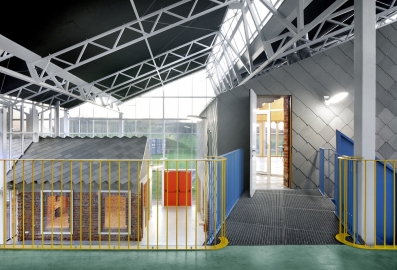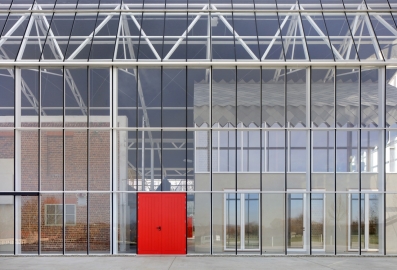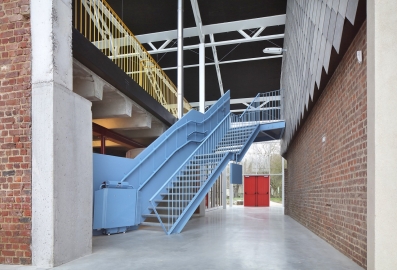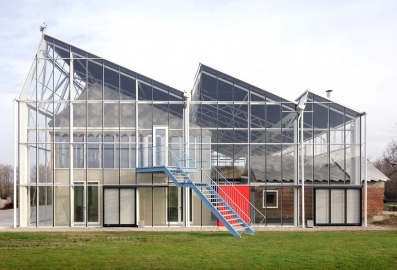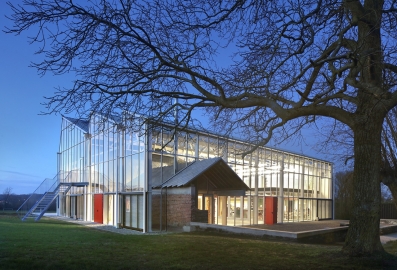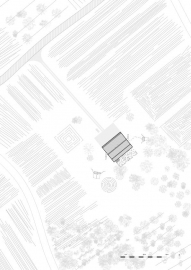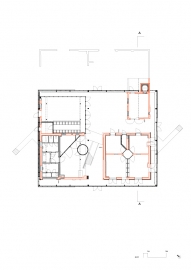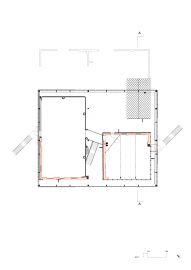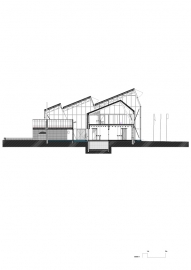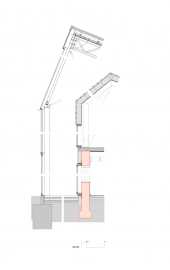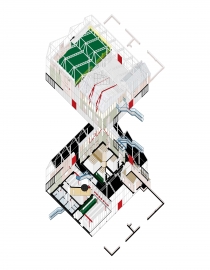Paddenbroek educational rural centre
Paddenbroek is the result of a competition to make a newly built project on the site of an old fruit farm. When accepting the assignment, we expanded the team with an engineer who would sit at the design table and ensure that the architecture takes on the task of the building technics. Or in other words, how sustainability finds its meaning in the architecture.
In the rolling landscape of Gooik stands an old fruit farm that was converted into a new educational rural center. A large conservatory was designed and placed over the old farmstead as a protective gesture. This created a wind- and watertight intermediate environment that generously welcomed visitors, while the new program was housed in the old buildings themselves. The old house was converted into offices and a meeting room, the barn into a café with sanitary facilities, and the outbuilding with baking oven was restored as such. The conservatory consists of a white steel structure with three shed roofs, the southern slopes of which were covered with solar panels and the northern ones let in an abundance of light. While the conservatory provides protection in the winter, the single glass and natural ventilation through open panels provide much needed cooling in the summer.
In the undulating area of the Pajottenland, landscape, nature, heritage and culture have become closely intertwined over the centuries. Maintaining and strengthening that fragile balance was one of the major challenges of the Paddenbroek rural center. Rather than demolishing the farm and developing a newly-built project, as the client initially had in mind, we opted to dismantle the old buildings and repair them where necessary, with only the spaces that strictly needed to be conditioned wrapped with clay and covered with a "blanket" of overhanging slates. In doing so, and through adding the conservatory, we could provide more space than was initially asked, without a higher cost. We could include extra space for a not yet clearly defined program. The covered in-between space has much more surface and can fulfill more than the program of today. Giving possibilities for the future is giving possibilities for the future of the building. Re-questioning the climate conditions were the key to this approach. The result is a precise layering of materials and temperatures, original buildings, existing landscape and contemporary additions.
Cultural and design sustainability stood central from the study phase. Taking a sustainable approach, a glass-steel construction was created with the logic of conservatory technology. The farm was integrated into the whole, restored and insulated with moisture-regulating wood-cement panels and clay. Only these areas and the offices can be heated. In this way, heating costs are sustainably limited. The single-glazed conservatory is optimal for climate control. Hatches in the roof and expanded metal grilles on the four sides of the building can be opened at night. Together with the sun protection, they can prevent overheating. Acoustically, black Heraklith panels cover the inside of the shed-roofs that graphically contrast the white steel trusses of the greenhouse. The project is technically sustainable, sustainable in dealing with the existing and with heated and unheated space, and thus increases the programmatic possibilities for the future due to the versatile usability of the added space. The building can further adapt in use, without architectural limits. Sustainability here is never the result of far-fetched technical solutions.

